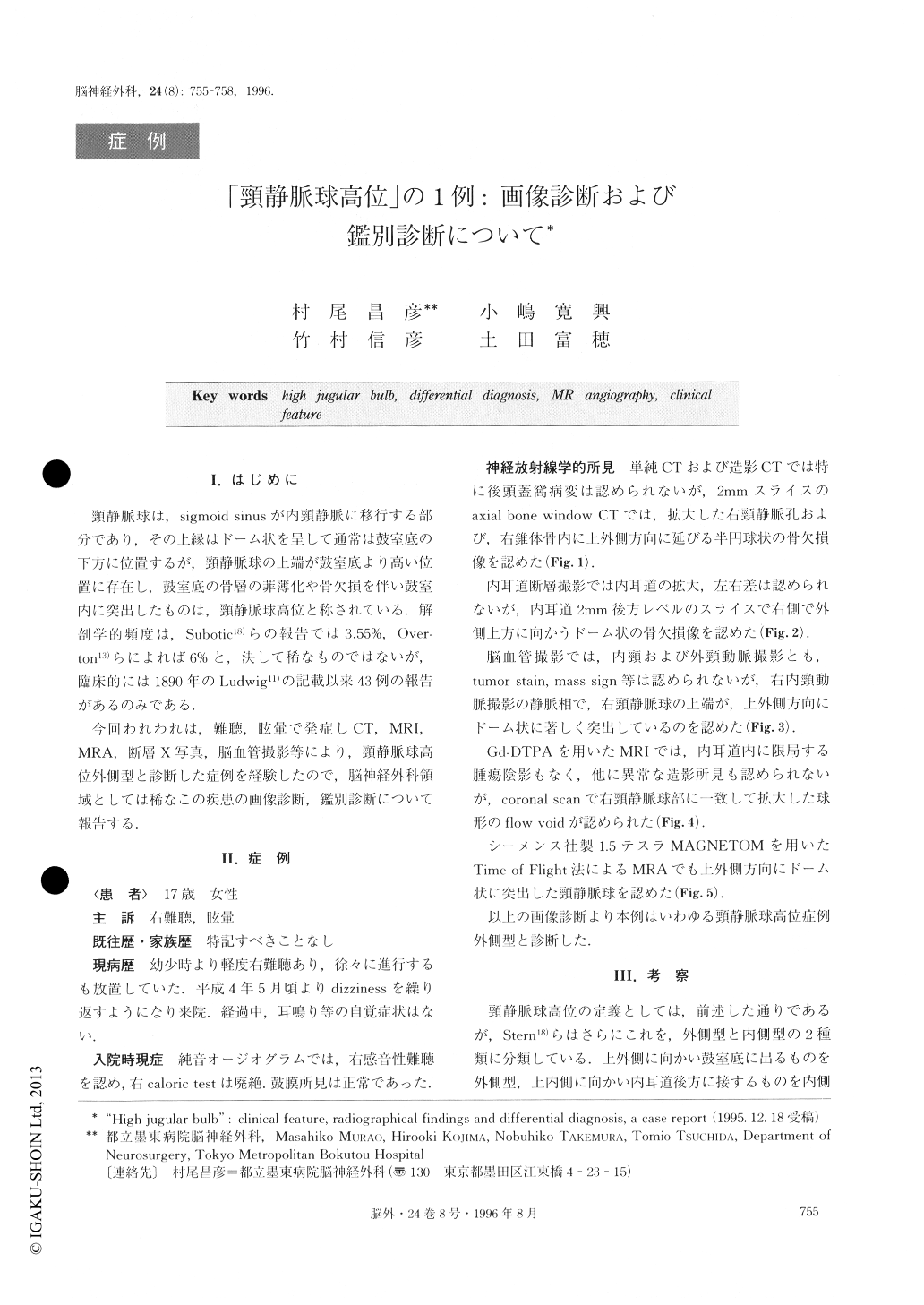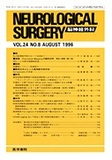Japanese
English
- 有料閲覧
- Abstract 文献概要
- 1ページ目 Look Inside
I.はじめに
頸静脈球は,sigmoid sinusが内頸静脈に移行する部分であり,その上縁はドーム状を呈して通常は鼓室底の下方に位置するが,頸静脈球の上端が鼓室底より高い位置に存在し,鼓室底の骨層の菲薄化や骨欠損を伴い鼓室内に突出したものは,頸静脈球高位と称されている.解剖学的頻度は,Subotic18)らの報告では3.55%,Over—ton13)らによれば6%と,決して稀なものではないが,臨床的には1890年のLudwig11)の記載以来43例の報告があるのみである.
今回われわれは,難聴,眩暈で発症しCT,MRI,MRA,断層X写真,脳血管撮影等により,頸静脈球高位外側型と診断した症例を経験したので,脳神経外科領域としては稀なこの疾患の画像診断,鑑別診断について報告する.
Anatomically, the top portion of the jugular bulb lies just below the floor of the hypotympanum. In rare in-stances, it can protrude upward and elevate the floor of the hypotympanum thus placing it in the middle ear. Such a case is called high jugular bulb. This anatomical variation has been found in 3.5% to 6% of the temporal bones studied in several reports. But, clinically, only 43 cases have been reported, because in most cases they are asymptomatic.
A 17-year-old female was hospitalized with right hearing disturbance and dizziness. Neurootological ex-amination revealed sensory neuronal hearing disturban-ce. A caloric test was scaled out. Axial bone window CT scan demonstrated an enlarged jugular bulb and an extended upward projecting hypotympanum. MRI indi-cated flow void in the same region. Retrograde jugu-lography has been the most useful method for diagno-sis but we were able to diagnose it by noninvasive MR angiography. High jugular bulb is an unfamiliar disease entity for neurosurgeons, but we should remember that it is one of the differential diagnosis for c-p angle re-gions or jugular foramen regions.

Copyright © 1996, Igaku-Shoin Ltd. All rights reserved.


